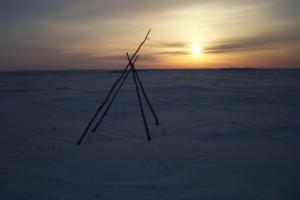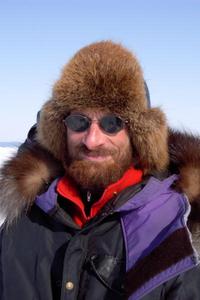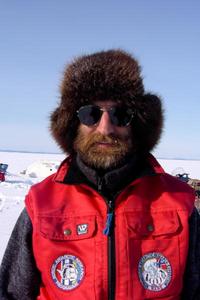7 April, 2002
Why study the amount of light that penetrates the
snow??? What is the importance???
Underneath the snowpack of Arctic Alaska is life.
The snow in Arctic Alaska will eventually melt.
The snow will reveal a tundra of tussocks and
blooming flowers. Currently, beneath the layers
of snow, Arctic summertime life is beginning to
bloom and flourish. Scientific studies have
shown that flowers begin to bloom underneath the
snowpack. In the spring, while the snow still coats
the ground,
the flowers are beginning to bloom. For this to
happen, photosynthesis has to take place.
Photosynthesis requires light. So, light must be
penetrating through the snow and reaching the
vegetation. The amount and type of snow that
falls in a given year will affect the growth of
the vegetation. If the type and amount of snow
is changing in the Arctic, then the vegetation
can be changing. The vegetation growth will also
affect other biological activity occurring.
Light penetration also plays a role in the
chemical sampling that we are conducting. The
snow samples will be tested for chemicals that
may have been deposited in the snow. Some of
these chemicals may be photo-reactive. Photo-
reactive means that the chemical makeup of the
chemical may change over time when subjected to
light. The light could actually change the
chemistry of the substance. This can have long-
term implications for substances being deposited
in the Arctic.
SO WHERE IS MRS. CHEUVRONT??? LET'S PLOT!!!
Latitude: 67.08589 degrees North
Longitude: 157.86005 degrees West
Camp was broken in the morning amidst the darkened,
spruce, trees. We traveled on to measure one tundra
site. The wind greeted us on the tundra as it often
does, making us feel much colder. The trail marked
with the tripod stakes took us closer and closer to
the Brooks Range. We arrived in the tiny village of
Ambler. It sits peacifully along the banks of the
Kobuk river. The Brooks Range mountains looms behind
Ambler. This village will be our last stop in
civilization for at least two weeks. Tonight we will
stay in the warm school, refreshed after clean
showers. Tomorrow, we teach and then move on...
Temperature min: -16 degrees Celsius
Temperature max: -2 degrees Celsius
Note that the temperatures I have been listing in this
journal do not account for the wind-chill factor.
When the wind blows, any warmer bodies, like ours,
feel considerably colder. The wind often blows in the
Arctic.
Homework:
Use a wind-chill chart to determine the effective
temperature for conditions of the above air
temperatures and a wind speed of 5 m/s (meters per
second). Note that, depending on the chart that you
use, you may have to convert from derees C to F, and
maybe m/s to miles/hour.
Also imagine, driving the snowmachine at a speed of 30
miles per hour at the same air temperatures.

The tripod trail marker. These trail markers have lead our path from Selawik to Ambler. Soon we will leave these trail markers and head into the Brooks Range.

Smile!

Smile Matthew!

Smile Glen!
Contact the TEA in the field at
.
If you cannot connect through your browser, copy the
TEA's e-mail address in the "To:" line of
your favorite e-mail package.
|
